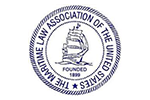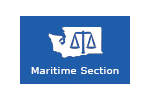Wrongful Death Attorneys
Shipowner Liable for Unknown Illnesses that Manifest after Seaman Has Left the Service of the Ship
By John Merriam
During better than 30 years of practicing maritime law, this practitioner has advised seamen that their entitlement to maintenance and cure depended upon whether a need for medical attention “manifested” while they were in the employ of the vessel owner. This was true even for pre-existing illness or injury, as long as the seaman did not intentionally conceal the prior ailment from the vessel owner. See, Schoenbaum, Admiralty and Maritime Law sec. 6-30 (5th ed. 2011).A recent case from the federal Second Circuit suggests that I have been giving seamen the wrong advice.
Messier v. Bouchard Transportation, 2012 A.M.C. 2370, 688 F.3d 78 (2d Cir. 2012), cert. denied, ___ U.S. ___ (3/18/13), is a case involving a seaman working aboard a tugboat in New York state who was diagnosed with lymphoma after he left his job with a minor, unrelated injury to his back. Richard Messier was hired by Bouchard Transportation in March 2004. He fell down a ladder in October 2005 and was taken off the vessel. A medical exam that November showed imminent kidney failure. His doctors performed more testing to try to determine why his kidneys failed and lymphoma was diagnosed in December 2005, two months after Messier left the tugboat. The federal trial court dismissed the case on summary judgment because, even though it was undisputed that the seaman had lymphoma during his service to the vessel, those symptoms did not “manifest” while he was aboard. The Second Circuit reversed and granted partial summary judgment to the seaman. Messier, 2012 A.M.C. at 2371.
The first presentation of symptoms, however, is not the touchstone for maintenance and cure. If a seaman’s injury or illness occurs during his service, he is entitled to maintenance and cure regardless of when he starts to show symptoms.
Id. Nothing new so far. The rule is that “a seaman may be entitled to maintenance and cure even for a preexisting medical condition that recurs or becomes aggravated during his service.” 2012 A.M.C. at 2375. But Messier was asymptomatic and the lymphoma could not ‘recur’ because no one knew he had it. And there was no evidence that the lymphoma was ‘aggravated’ while he was working aboard the tug. The Second Circuit ruled that Messier was entitled to maintenance and cure because the lymphoma might have ‘occurred’ while he was in the service of the tugboat.
It does not even matter, absent active concealment, if the illness or injury is merely an aggravation or reoccurrence of a preexisting condition. (citation omitted) This well-established rule does not permit an exception for asymptomatic diseases–so long as the illness occurred or became aggravated during the seaman’s service, he is entitled to maintenance and cure. For the sake of convenience, we will call this the ‘“occurrence rule.”
2012 A.M.C. at 2377. (It should be noted here that the trial court rejected the plaintiff’s alternate theory–that he was entitled to maintenance and cure because the cancer manifested “while he was otherwise receiving maintenance and cure.” That ruling was not pursued on appeal.)
The court distinguished a case where a preexisting injury recurred after a seaman’s service to the ship, but the seaman “did not submit any evidence showing that illness existed during his service”. Id. at 2375 (emphasis added). It framed the issue as
whether a seaman may obtain maintenance and cure for an injury that occurs during his service of the ship, but does not present symptoms until his service is over. And though this question appears to be a matter of first impression among the federal appeals courts, its answer is straightforward. The only evidence submitted by either party establishes that Messier’s illness occurred during his service. He is therefore entitled to maintenance and cure. The district court erred in concluding otherwise. . . . The rule of maintenance and cure is simple and broad: a seaman is entitled to maintenance and cure for any injury or illness that occurs or becomes aggravated while he is serving the ship.
2012 A.M.C. at 2376-77 (emphasis in original) (citation omitted). The test is to prove that the “injury occurred or was aggravated during his service.” That’s the trick for undiagnosed maladies–to prove just when they ‘occurred’. The Second Circuit cited favorably to, and distinguished, a case where psychic trauma preexisted service to the vessel and recurred after the seaman left. Maintenance was denied because there was “no proof” that the trauma existed during the seaman’s service. Id. at 2381.
Although Messier’s doctor’s testimony that Messier’s condition ‘existed’ during his service does not rule out the possibility that it also existed before his service, the Supreme Court has instructed us to resolve “ambiguities or doubts . . . in favor of the seaman.” (citation omitted) Under the occurrence rule, Messier is therefore entitled to maintenance and cure as a matter of law.
Id. at 2378 (emphasis in original). In other words, even though no one knows for sure when Messier’s lymphoma first occurred, it probably occurred while he was in the service of the vessel, and he is entitled to the benefit of the doubt.
(T)he occurrence rule . . . might add complexity to many maintenance and cure actions by calling into question when, exactly, a disease first began. That is true without a doubt. But the Supreme Court has said that a shipowner’s duty to provide maintenance and cure is “among the most pervasive of all,” and that we should not defeat it by “restrictive distinctions.” (citation omitted)
Id. at 2383-84.
Summary judgment for the vessel owner was reversed and partial summary judgment was entered for Messier. The case was remanded for trial on the appropriate amount of his entitlement to maintenance and cure.
The ‘occurrence rule’ by itself does not really expand the doctrine of maintenance and cure, even though this is the first federal appellate court decision to grant maintenance and cure for a malady that manifested after the seaman left the vessel. Where this case really enlarges the rights of seamen is the extension of the ‘all ambiguities and doubts‘ principle of Vaughan v. Atkinson, 369 U.S. 527 (1962), to the question of exactly when the illness or injury first occurred. No one knows for sure when Messier’s lymphoma did first occur. As the appellate court concedes, it is quite possible that he had it before he started working for Bouchard Transportation. By giving Messier the benefit of the doubt, the Second Circuit has truly given a greater remedy to all seamen.
Eagle John Merriam is a former merchant seaman, now a sole practitioner at Seattle’s Fishermen’s Terminal who restricts his practice to the representation of claimants for maritime wages and injury.













